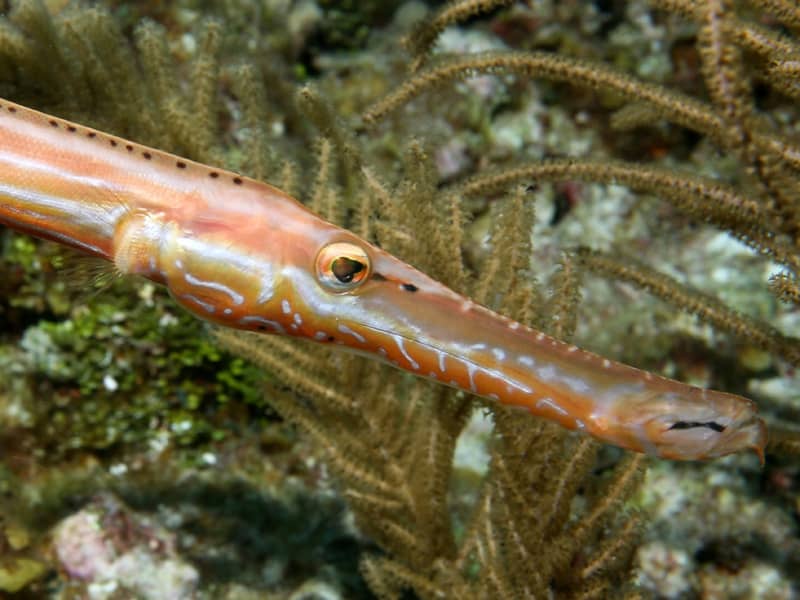Atlantic Trumpetfish Facts
- Most notably, the Atlantic Trumpetfish seems to be one of those rare creatures that proves Nature has a sense of humor. That’s because it seems to be capable of (according to many humorous-minded Ichthyologists) tooting its own horn.
- In addition, this interesting ocean creature was first described by scientists in the year 1841. Its common name also has a unique origin. The term actually derives from the Greek word for mouth.
- The species remains popular for both its intelligence and its utilization of an elaborate courtship dance during mating season.
- While it appears to be harmless to humans, the reverse does not hold true. As a result, its population numbers seem to be declining rapidly.
- Quite sadly, this occurs largely due to its unfortunate popularity in home aquariums. However, despite the rapid plunge in wild populations, the IUCN does not yet list it as Threatened.
Related Articles
Atlantic Trumpetfish Physical Description
Firstly, the Atlantic Trumpetfish possesses a rather highly elongated body shape. Further, the snout develops even more elongated. It also ends in a small, trumpet-like (the source of the common name) mouth.
Amazingly, the species also remains capable of changing its colors at will. As a result, it has quite excellent camouflage. But, its primary natural coloring is a brown base, with brown or black patches.
The Atlantic Trumpetfish further averages a total length of only about 24 in (61 cm). However, individuals sometimes reach a length of 36 in (91 cm). The long head uniquely comprises about one-third of its entire length.
Finally, its teeth develop small and are oddly only present in the lower jaw. This unique fact only serves to further distinguish it from many related species.
- Kingdom: Animalia
- Phylum: Chordata
- Class: Actinopterygii
- Order: Syngnathifromes
- Family: Aulostomidae
- Genus: Aulostomus
- Species: A. strigosis
Atlantic Trumpetfish Distribution, Habitat, and Ecology
The Atlantic Trumpetfish also evolved as endemic to a select portion of the Atlantic Ocean. This range extends from the coastal regions of Florida, in the United States, to Bermuda, and south to the northern coast of South America.
In addition, it most commonly lives in or near areas of coral reef. Yet it will, on occasion, inhabit rocky areas of the sea bottom. Further, it generally inhabits shallow regions, at depths between 7 to 82 ft (2-25 m).
It also preys upon a variety of small fish,like most related species. However, it has an unusual feeding method. That’s because it literally draws it into its mouth via a strong suction generated by the snout.
Finally, its cleverness displays itself in its habits. It often hides behind larger fish to wait for prey. Thus, swimming with its snout pointed down, and drifting with the currents, it appears as random flotsam.
Species Sharing Its Range
Check out our other articles White Spotted Puffer, Stonefish, Pinecone Fish, Dragon Moray Eel, Goose Beaked Whale, Rainbow Grasshopper, 5 Fabulous Deer Varieties, Apple of Sodom

